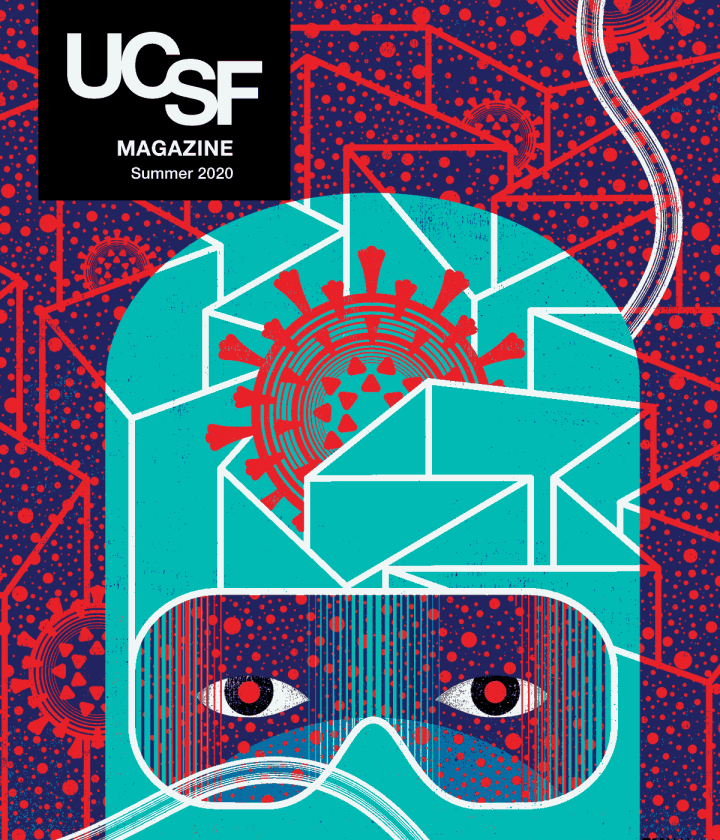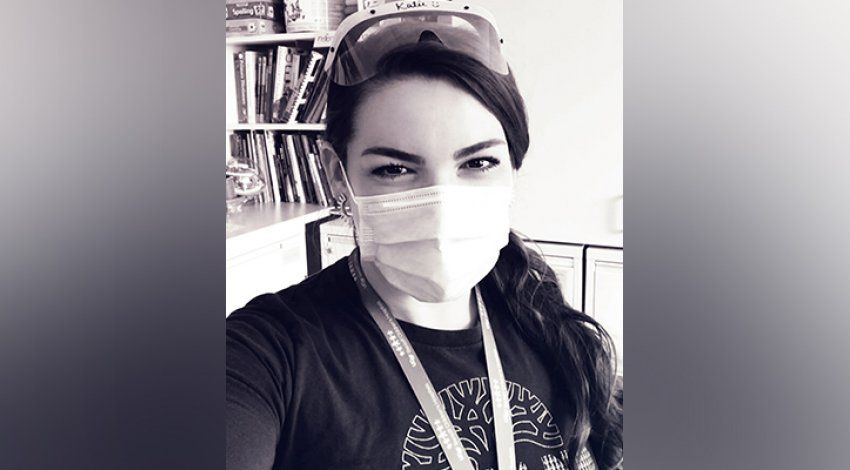Most of us are now living an unfamiliar existence: home-bound, our world seized by uncertainty. But there are some people for whom the shelter-in-place lifestyle is second nature, who habitually reach for hand sanitizer, whose heads instinctively snap at the sound of a cough.
They have, in a sense, been through this before – spending months, even years, with their lives spiraling out of control, their days bleeding into each other, unable to venture outside for fear of germs beyond their walls.
These families have, in fact, endured much worse than a pandemic: the diagnosis of a child with a severe illness.
Kids who’ve been really sick – immunocompromised or otherwise extra-susceptible to infection – also know the drill. They’ve been pulled out of school, separated from friends, stuck at home. It’s an irreversible element of their childhood, one that the current pandemic has either resurrected or extended.
Here, five families who’ve survived this sort of journey – thanks to the experts at UCSF Benioff Children’s Hospitals – offer advice for those of us navigating such circumstances for the first time.
Practice Gratitude.
On April 13, Kaysan turned 7. He splashed in a new inflatable pool and teetered around on his first bike – a friend’s hand-me-down, thoroughly sanitized.
It was a low-key event – just like nearly all of the family’s celebrations since Kaysan was diagnosed with leukemia four years ago.
“I’m sure a lot of kids are missing their birthday parties and having a hard time with that,” says his mother, Brittany Azam. “In that sense, I’m grateful for our experience. Eating cake at home is a normal birthday for Kaysan.”
The family is finding lots to celebrate lately, largely because they’ve been through much greater hardships than a pandemic. Following Kaysan’s diagnosis, he was put in isolation at UCSF Benioff Children’s Hospital San Francisco to protect his fragile immune system. His brother, Zyan, only 8 months old at the time, could join him in the hospital. But if Zyan was taken outside, he wouldn’t be able to re-enter his brother’s room due to the risk of infection.
His parents were faced with a tough choice: Gather everyone in one hospital room, or break up the family.
“How could I choose between my sick son and my nursing baby?” Brittany says.
It took three bone marrow transplants to jump-start the production of healthy blood cells in Kaysan’s dangerously fragile body. The family ultimately lived together in his hospital room for seven months. In that room, Zyan celebrated his first birthday, took his first steps, and said his first words.
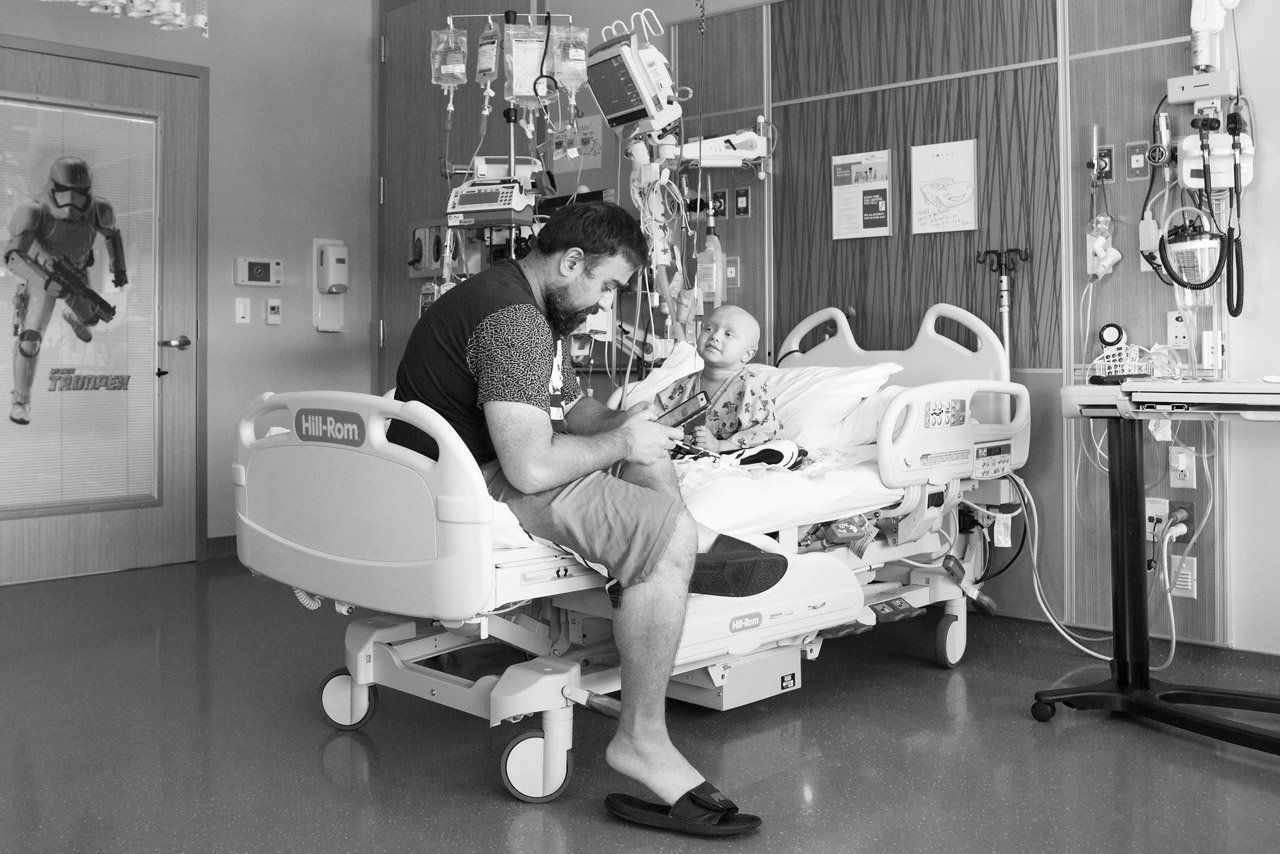
Ameer sits with son Kaysan in the hospital room where their family lived for seven months. Photo: The Mark Makers
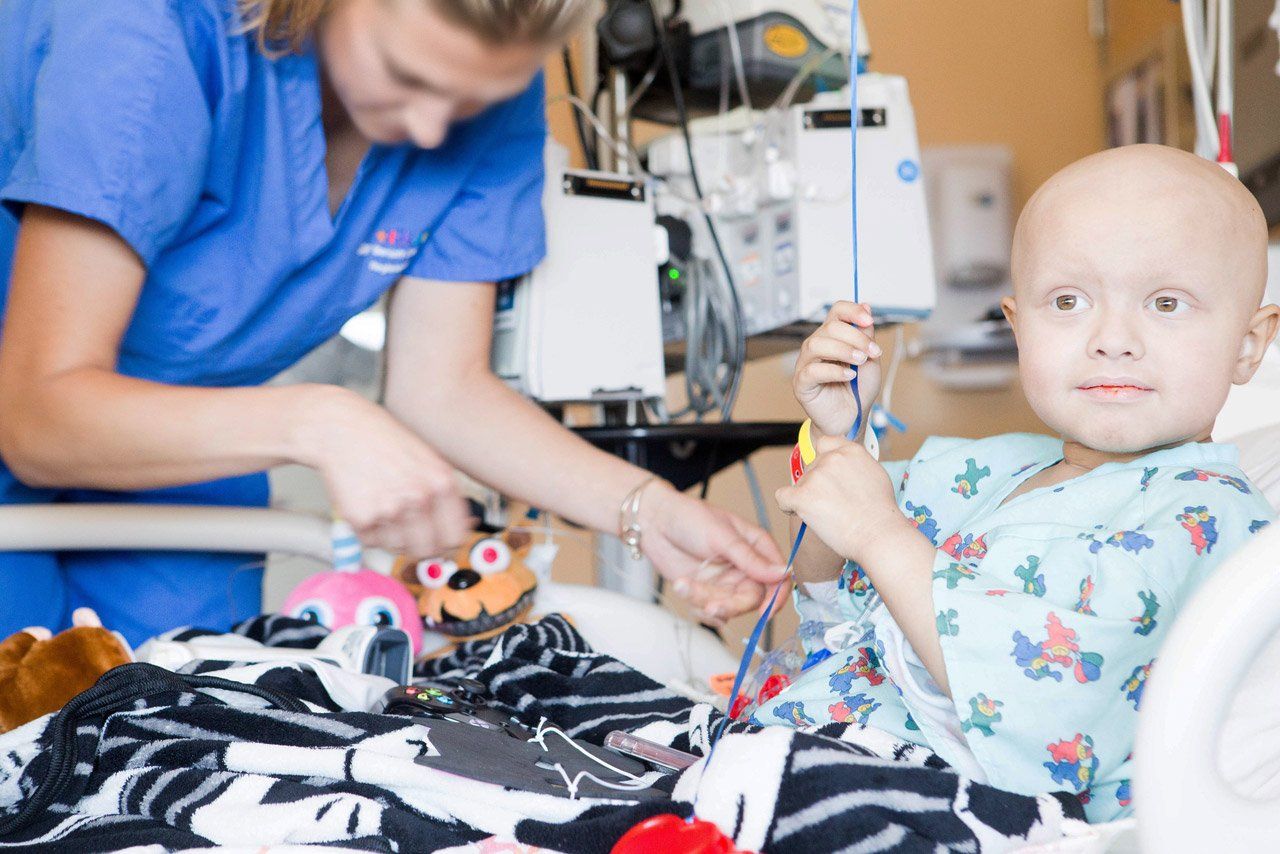
Kaysan holds a balloon during his little brother Zyan’s first birthday celebration at the hospital. Photo: The Mark Makers
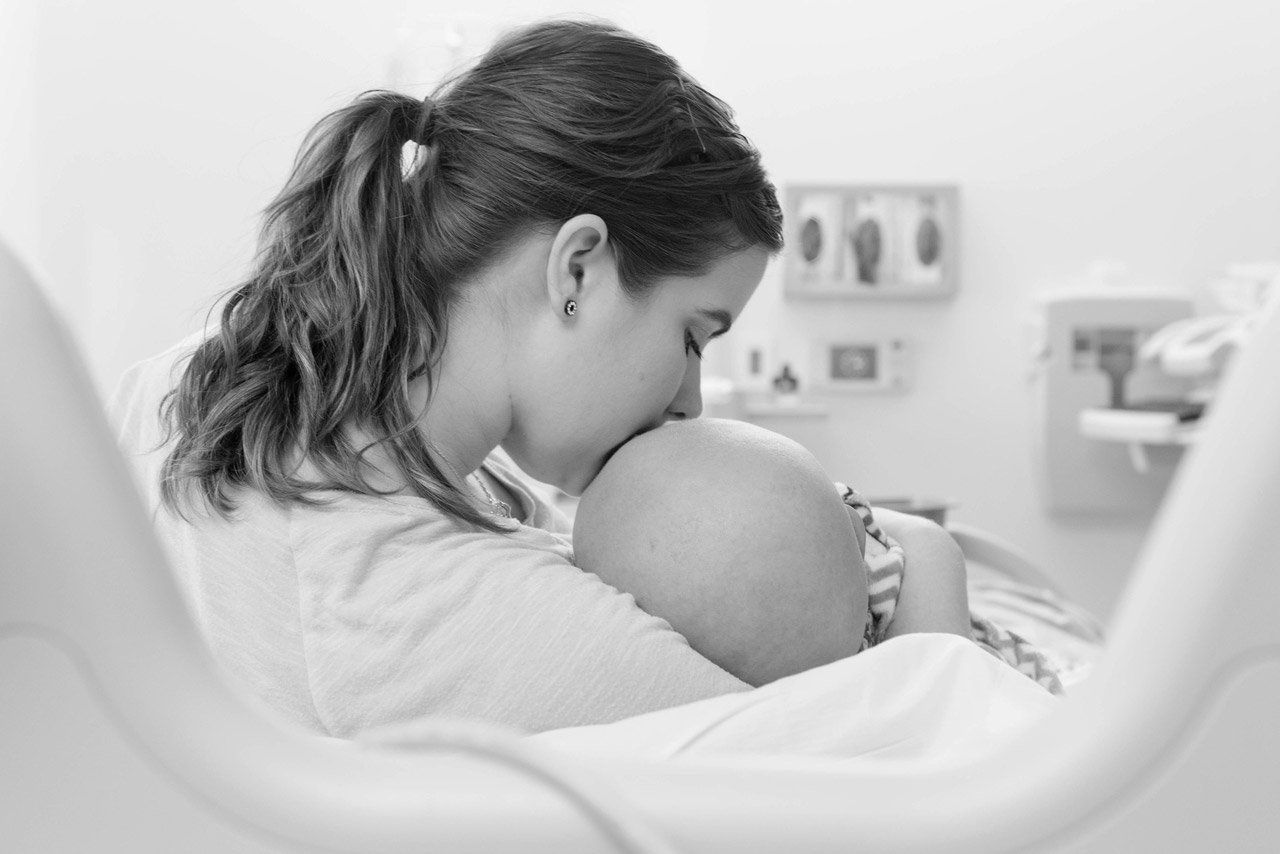
Mother Brittany cuddles with Kaysan during his treatment. Photo: The Mark Makers
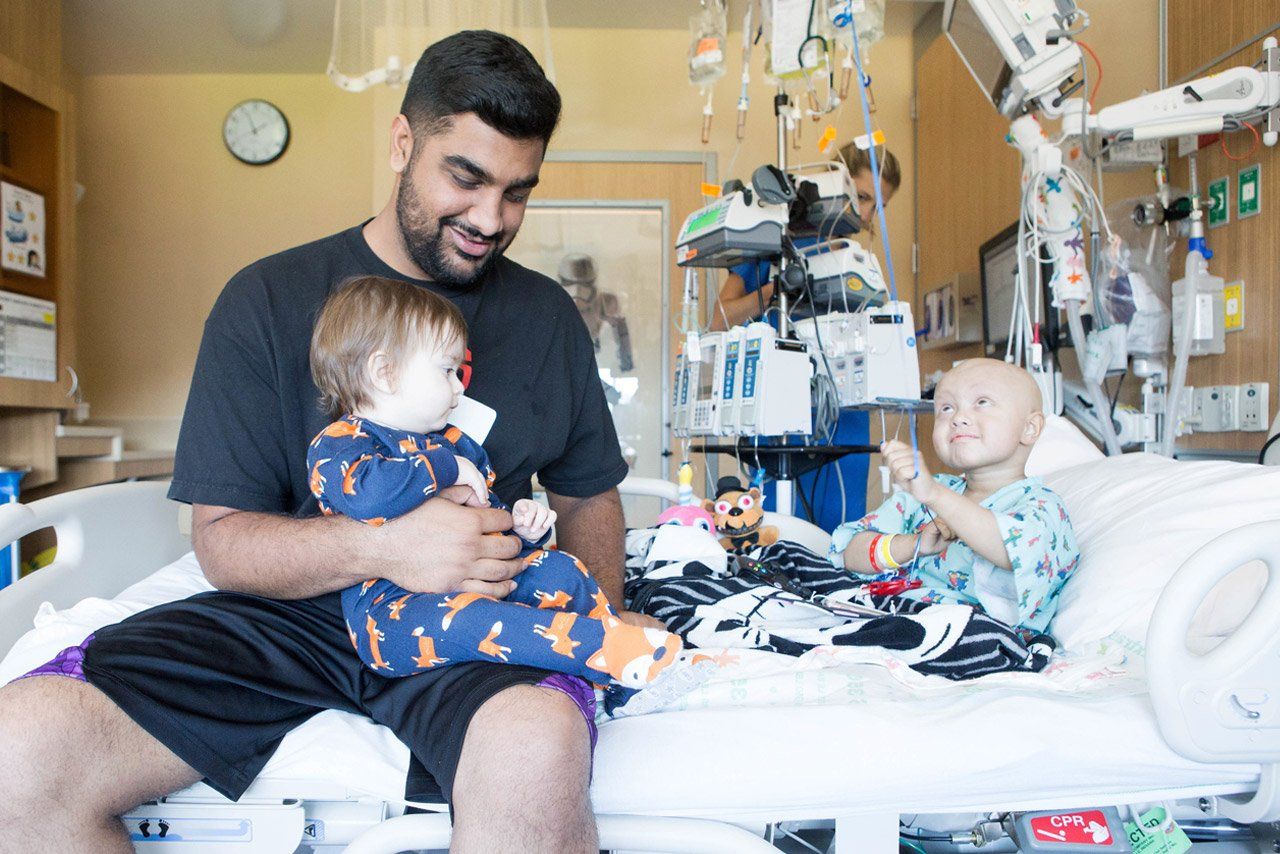
Kaysan and Zyan celebrate with their uncle Sukhi at the hospital at Zyan’s birthday party. Photo: The Mark Makers
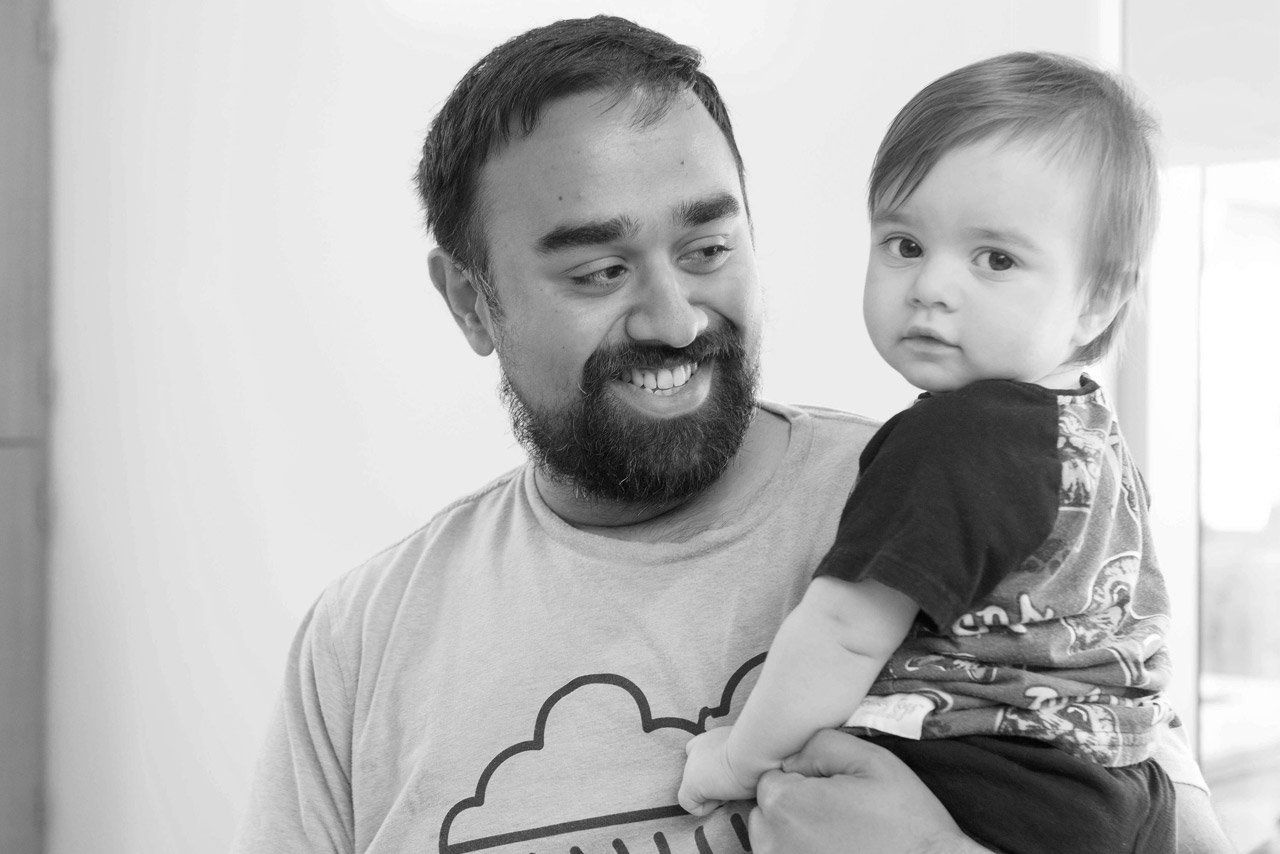
Ameer holds Zyan in his brother’s hospital room. Photo: The Mark Makers

In his hospital bed, Kaysan gets ready to celebrate his brother Zyan’s first birthday. Photo: The Mark Makers
Brittany was, at times, consumed by jealousy. “I could barely look at Facebook and see people going on playdates, to the beach, even pictures of people shopping at Target,” she recalls. “You want all that for your own family so badly.”
But now, in COVID quarantine, gratitude is a constant. They’ve weathered their share of challenges this time around: Attending school for the first time, Kaysan was bitterly disappointed to be taken out. His father, who worked in retail, was laid off, a major financial setback. Brittany gave birth to a third son in January and misses the support of friends and extended family.
But, at the same time, isolation has given the Azams a chance to spend time together in strained but far less personally trying circumstances. Plus, at home in Sacramento, they have what feels like infinite space compared to a single hospital room: their own kitchen, a shower with a curtain, familiar beds.
“If you are home and you are safe, that’s what matters,” Brittany says. “I hope people can be grateful for every moment with their family and think of this as a chance to focus on what’s important.”
Feel Your Feelings.
In the fall of 2016, 11-year-old Aleera’s face faded to pale – “ghost white,” says her mother, Monica Valdovinos – and massive bruises surfaced all over her body, seemingly at random. When the vomiting began, Monica rushed her daughter to the emergency room.
At UCSF Benioff Children’s Hospital San Francisco, Aleera was treated for severe aplastic anemia, a life-threatening condition that occurs when the body stops producing enough blood cells. After a year of chemotherapy, Aleera underwent a bone marrow transplant, then suffered a significant complication that destroyed her kidneys. She has since relied on dialysis, every day for nearly three years.
While Aleera remained resilient throughout months of grueling treatment and isolation, Monica was overwhelmed. A single mother, she had quit both her jobs to be at Aleera’s side, causing her to fall behind on her bills, and had sent her other two children to live with a friend in Nevada. Monica stopped eating and couldn’t sleep.
“Around my daughter I was a rock, but when I was alone I had moments of complete devastation,” Monica says. “It was hell on earth.”
She attributes that, in part, to keeping her feelings bottled up. “It emotionally destroys you when you don’t know how to tell people, ‘Hey, I’m struggling today,’” Monica says. “I didn’t know how to voice that.”
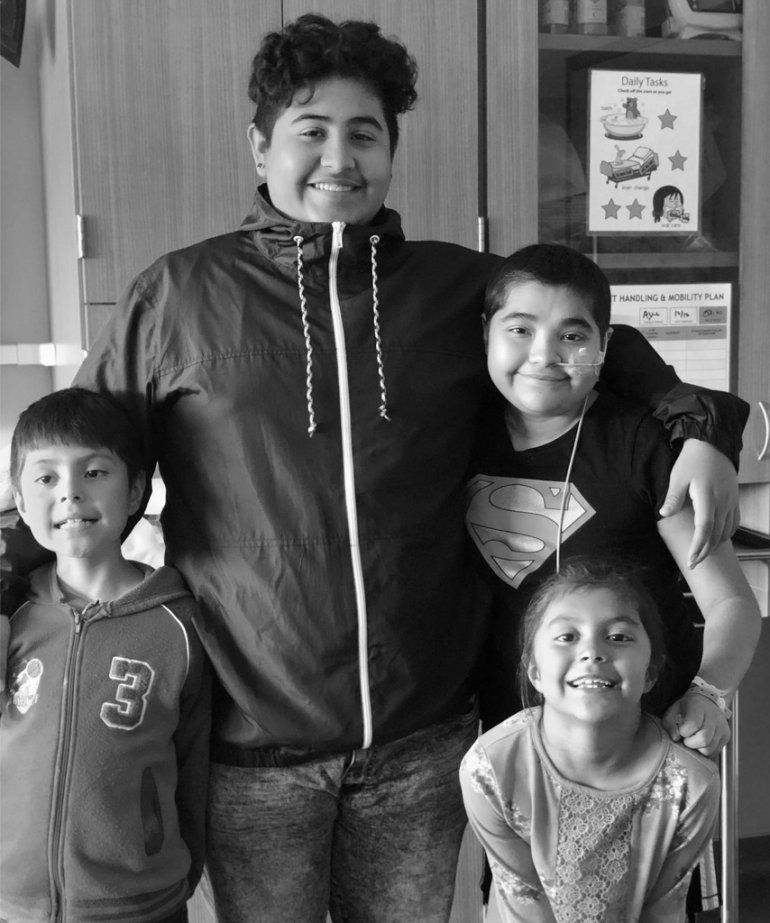
From left: Ryan, Devon (Aleera’s bone marrow donor), Aleera, and Esmeralda. Photo: Monica Valdovinos
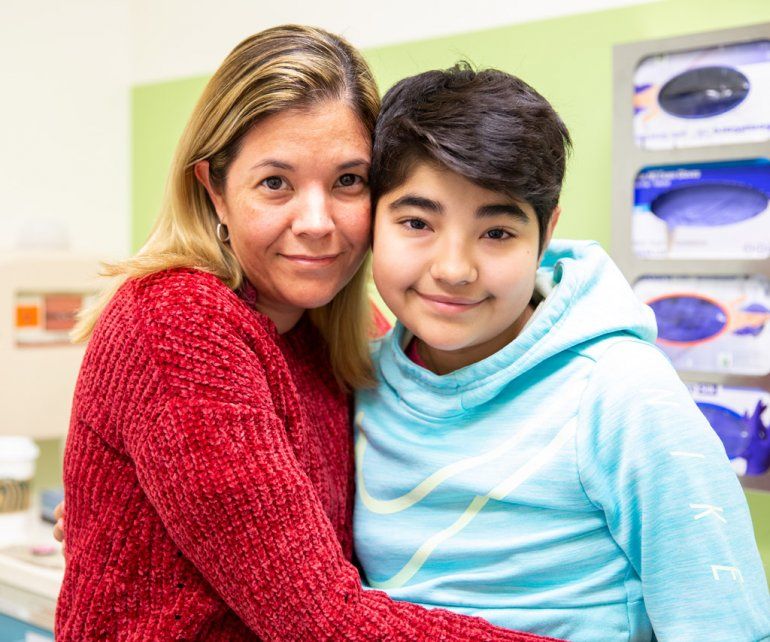
Photo: Jessica Bernstein-Wax
Aleera’s siblings visit her at the hospital shortly before her bone marrow transplant in 2017. Her mother Monica stayed by her side while she was hospitalized.
But in the age of COVID-19, Monica is vocal: quick to remind the guy breathing down her neck at the grocery store why social distancing is essential or to pour her emotions into a Facebook post.
“I tell everyone, ‘I’m here if you want to talk. FaceTime me, message me. I will help you because I have already dealt with this,’” she says.
Essential to overcoming hardships, she says, is first acknowledging that they’re hard.
“You need to allow yourself to feel what you’re feeling. If you’re angry or depressed, you need to know that it’s okay to cry. If you need to go outside and scream, do it,” Monica says. “Don’t deny yourself your emotions.”
Of course, for some, that advice might be moot. Aleera, now 15, seems pretty unfazed by the pandemic. She does her schoolwork, hangs out on her back porch making TikTok videos with her siblings, and sends quarantine memes to friends. After all, being isolated is nothing new for her. “I’m kind of used to it,” she says. “Plus, I’m a teenager, so I like to sleep a lot anyway.”
Prioritize Joy.
Imagine finding yourself in Alissa McDonald’s living room during a moment of maternal frustration. Maybe Presley, 9, is whining about her homework, or Riley, 6, is demanding her 10th snack of the day. So Alissa erupts in annoyance.
What you hear next might surprise you. One of her girls will likely respond not with an exasperated sigh or ear-splitting shriek but with a cheerful non sequitur: “Hospital mayonnaise.” “Yogurtland spoons.” “Chickens in unexpected places.”
Then they all dissolve into giggles.
Alissa and the girls keep an ongoing list of things that bring them joy. When one gets upset, the others’ job is to randomly blurt out something from the list.
“It’s hard to continue being irritated when someone is reminding you of things that make you happy,” Alissa explains.
Strategies like these help the family control their own happiness, Alissa says. They learned the necessity of positive thinking the hard way: Riley was diagnosed when she was three weeks old with severe combined immunodeficiency (SCID), often called “bubble boy disease.”
Video: Walter Zarnowitz
At risk of being killed by even a common cold, Riley spent months at UCSF Benioff Children’s Hospital San Francisco, followed by isolation at home and a string of additional hospitalizations – totaling about a third of her life so far. After a bone marrow transplant, stem cells donated by her mother did the job: since then, Riley has had a functional immune system. She was finally enjoying the life of a typical first-grader – until COVID hit. But they’re taking the current situation in stride.
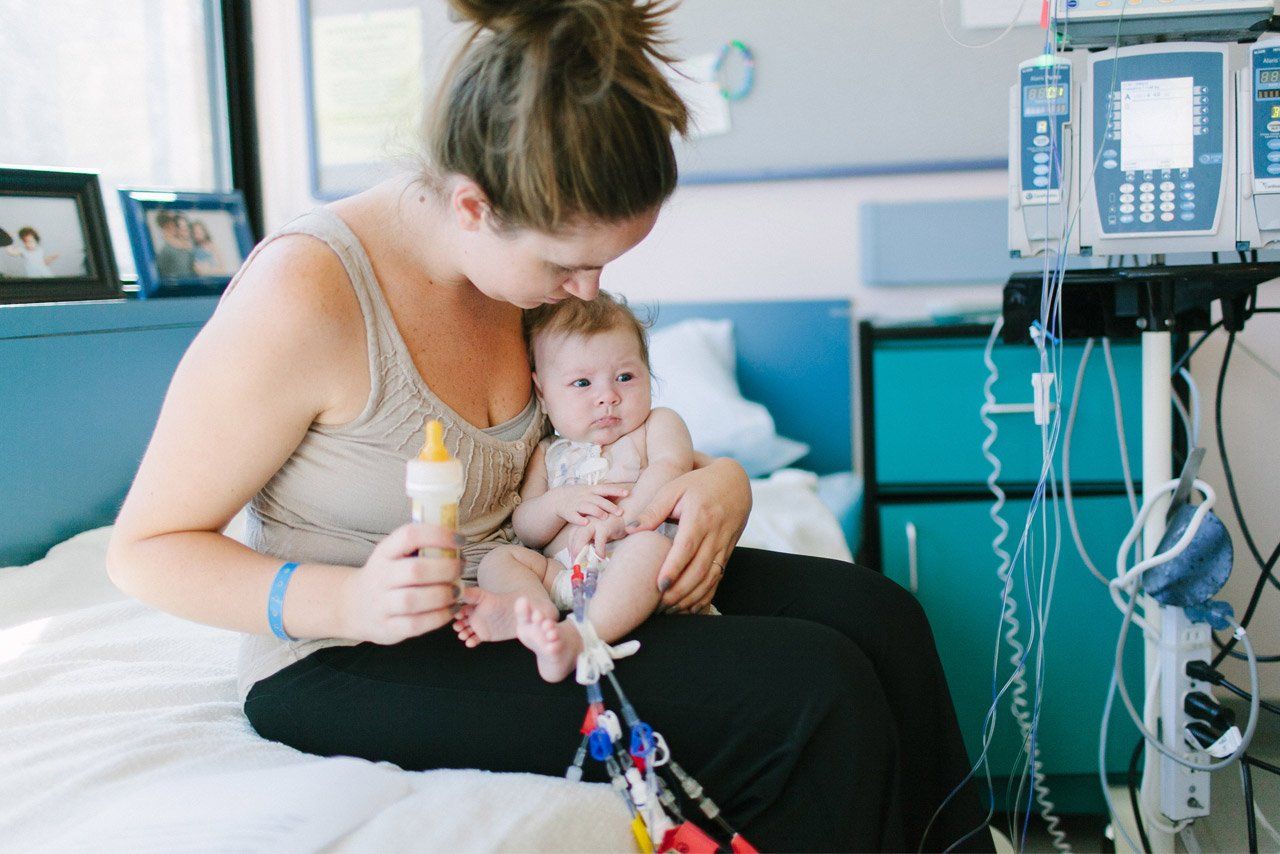
Alissa holds Riley at the hospital, where she spent the first few months of her life. Photo: Meg Perotti

Alissa cares for Riley in her hospital crib. Photo: Meg Perotti
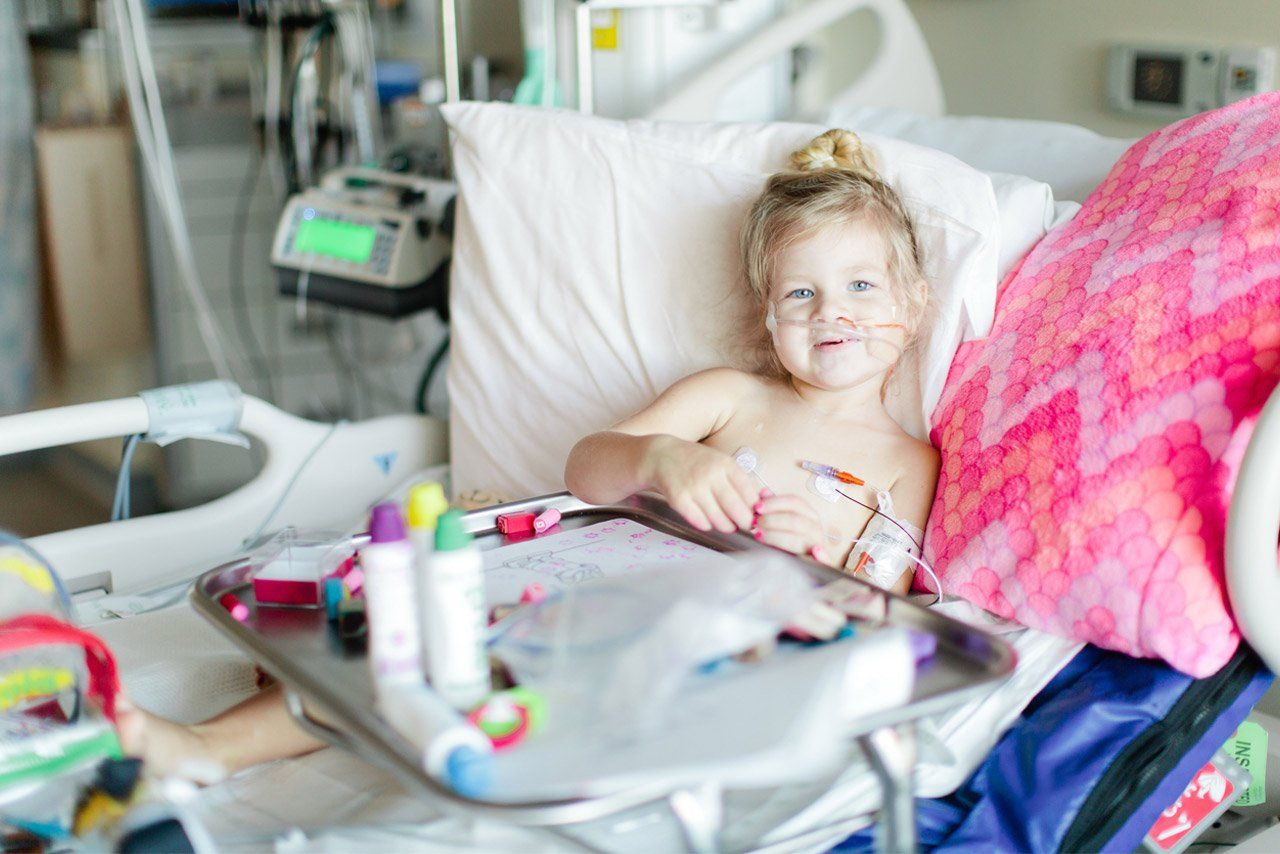
Riley does art at the hospital. Photo: The Mark Makers

Presley, Riley’s older sister, comforts her. Photo: The Mark Makers
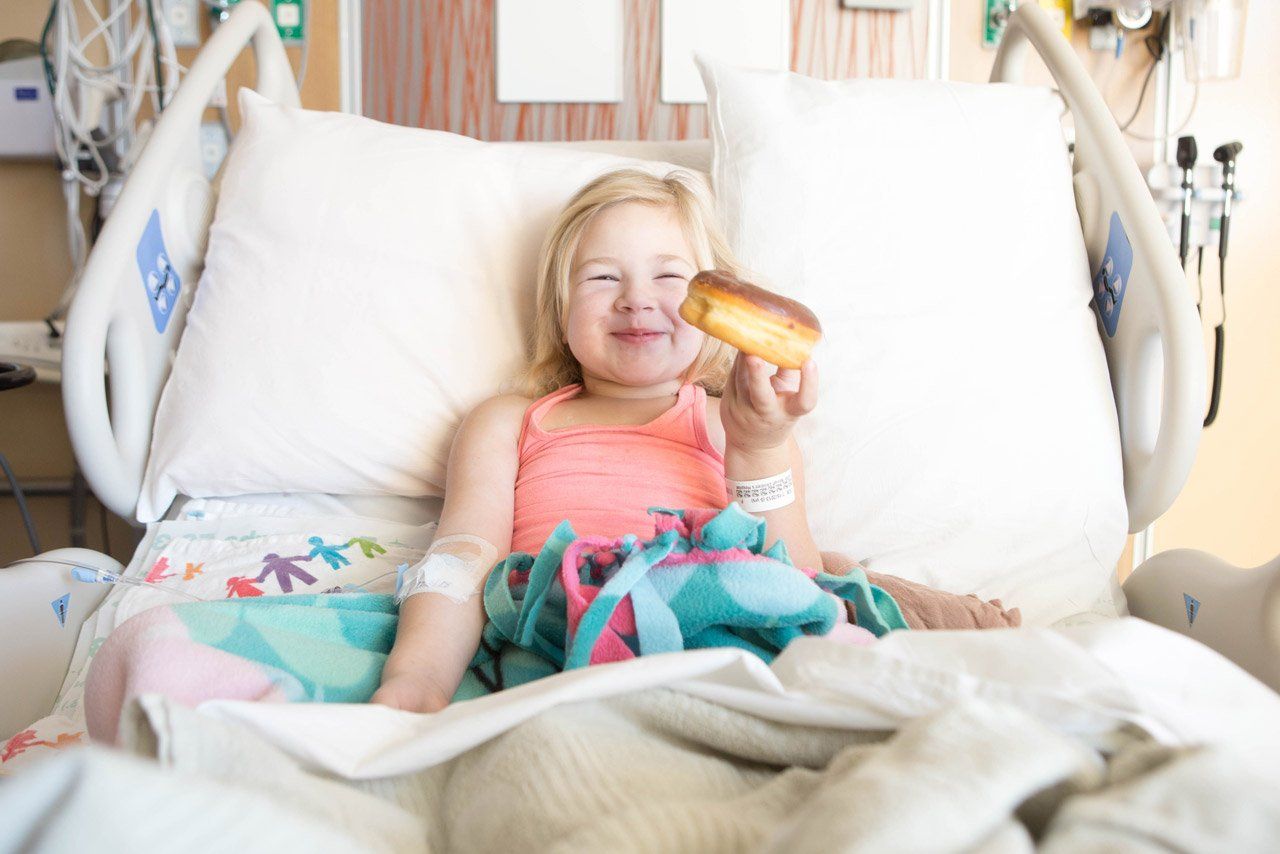
Riley enjoys a chocolate donut during a more recent hospitalization. Photo: The Mark Makers
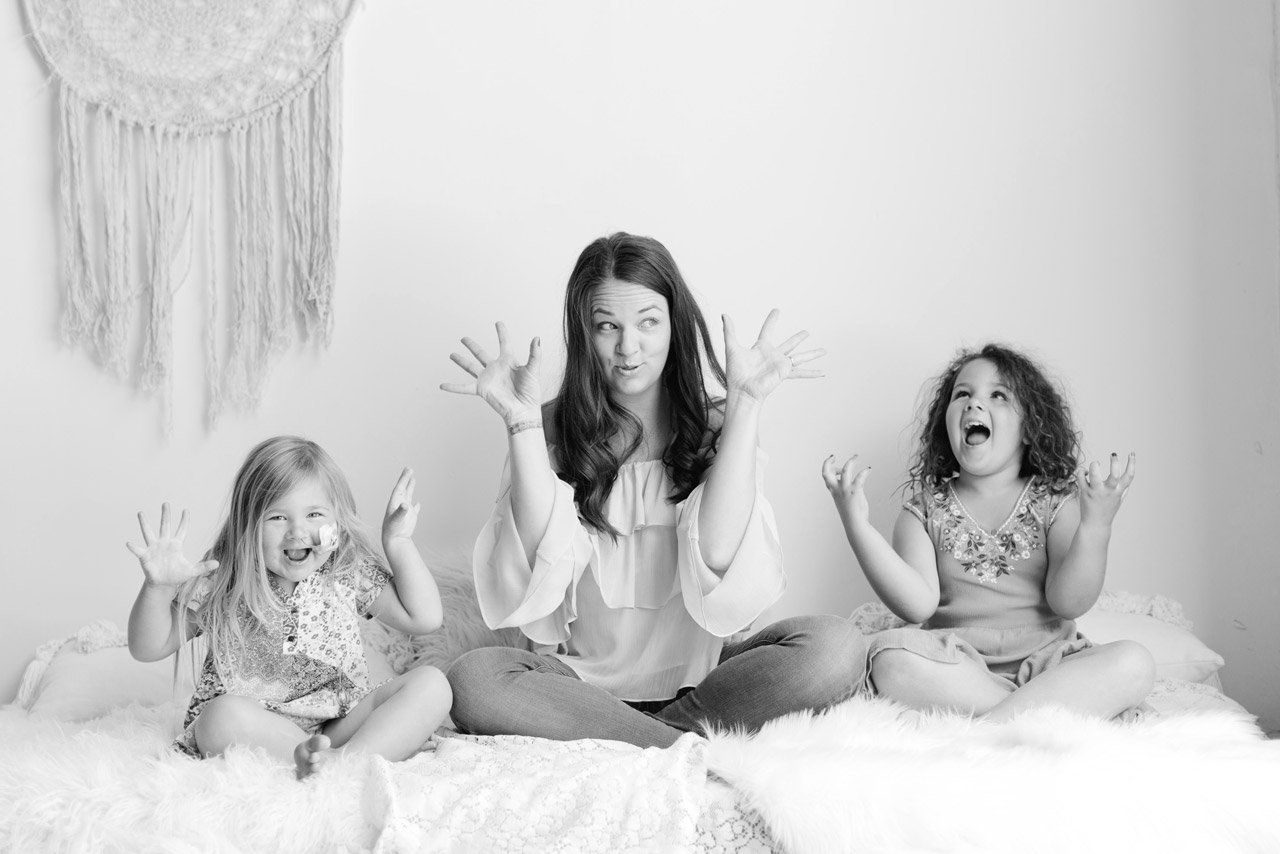
Alissa plays around with daughters Riley (left) and Presley (right) at home. Photo: Meg Perotti
“I’m used to having zero control over what happens. The only thing I can control is my attitude,” Alissa says. “Right now, my girls and I are having fun. I know we’re in the midst of a global pandemic, but we just are.”
Alissa has framed social distancing to her daughters as their opportunity keep others safe, a welcome change from having to protect Riley. And getting to enjoy time together with Riley in good health is, in her mother’s eyes, nothing less than a gift.
“I hope that people embrace the fact that this is happening whether we want it to or not,” Alissa says. “You can choose to see this as a beautiful thing. And we do.”
Stay Productive.
When sheltering in place began, Joseph’s life didn’t change much. The 19-year-old had already been practicing social distancing in preparation for a kidney transplant early this year.
In fact, much of the new normal – diligent handwashing, avoiding sick people, staying on high alert for symptoms – has been status quo for Joseph for as long as he can remember.
At age 6, he was diagnosed with a rare kidney disease that triggered high fevers, infections, anemia, cataracts, and other complications. By age 11, he desperately needed a new kidney and, incredibly, his stepfather was a match. But his body ultimately rejected the organ, forcing him to put his life on hold – a few months ahead of the rest of us – to prepare for his second transplant.
These experiences have inspired him: He’s studying to become a pediatric nurse. “Some people might be scared of hospitals,” he says. “But when I’m in a hospital, I feel safe, because I know I’m going to be taken care of.”
At first, Joseph’s mother, Linda Gutierrez, was skeptical. Was it really safe for him to be around sick people after all these years of avoiding them? Thanks to the enthusiastic blessing of his medical team at UCSF Benioff Children’s Hospital Oakland, she’s now proud of his choice.
“I think it’s coming full circle,” she says. “Maybe all this was supposed to happen to him so he could help others. If he helps even one child, it’s worth it.”
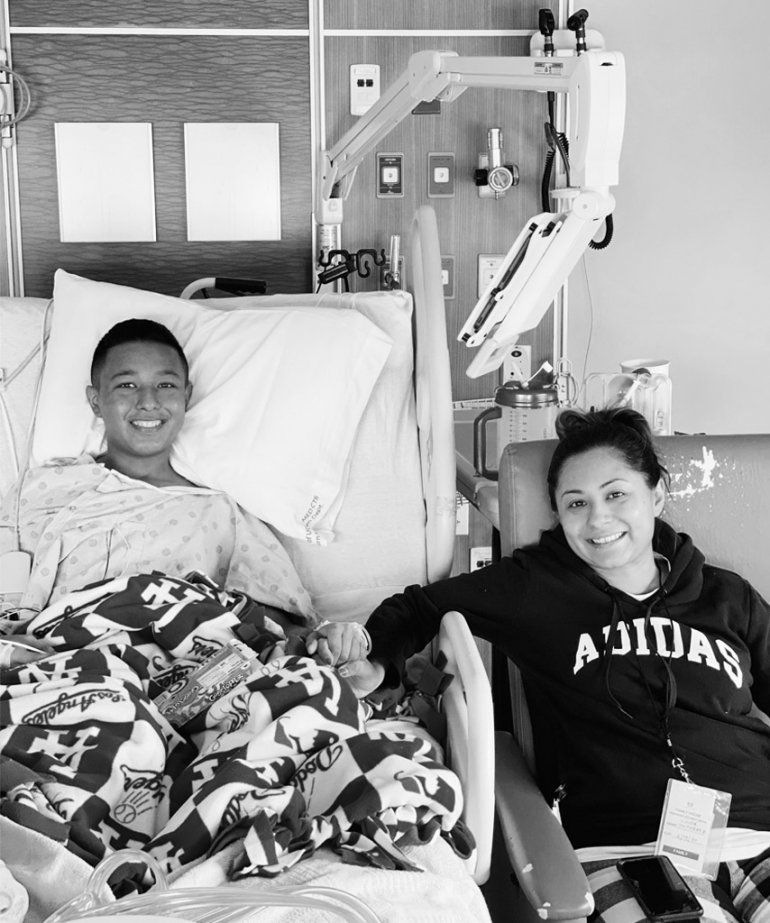
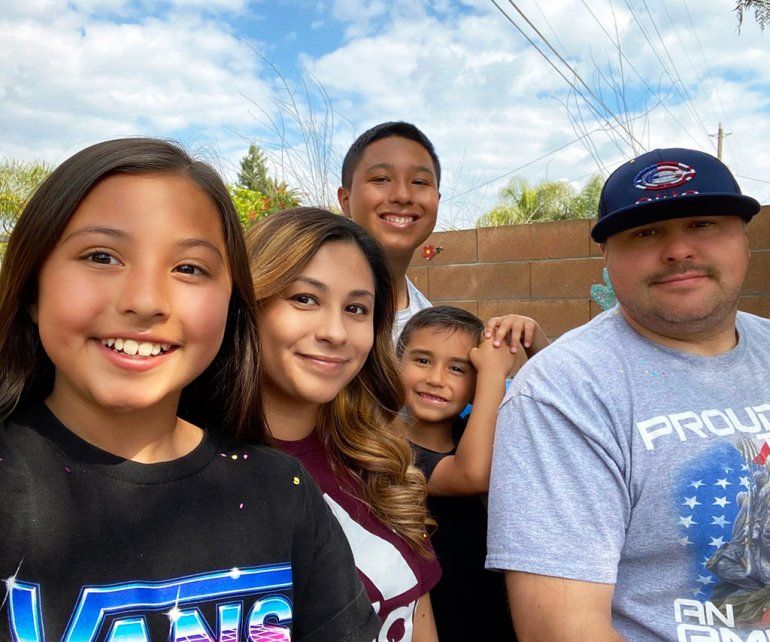
Photos: courtesy of Joseph Carrasco
Linda, Joseph’s mother, donated a kidney to him in January 2020 after his first transplant failed. Now, Joseph and his family are sheltering in place during the pandemic, still celebrating holidays like Easter.
Joseph credits his medical challenges with shaping him into a responsible and goal-oriented young adult. He’s been managing multiple daily medications for years and has maintained honor-roll grades with many of his teachers not even knowing he was sick.
During his recovery, Joseph is taking time off from college. He’s also been unable to go to his job as an after-school program leader since before his surgery – too many little-kid germs. But, true to his nature, he maintains a routine, and he recommends establishing daily habits as a way to prevent anxiety and depression.
On a typical day, he’ll take his dog out for walks, play ball with his 5-year-old brother, and help his 12-year-old sister with her homework. He’s also using this time to study Spanish, which many members of his family speak but he somehow never picked up.
“If you have something you’ve been putting off, do it,” he advises. “You don’t have an excuse now. That’s the way to make the best of the situation.”
Focus on What’s Possible.
It sounds counterintuitive: Lily is grateful for her experience with cancer.
But hear her out. “I have met some of the most amazing people who will be in my life forever because of cancer,” she says. “And it taught me to always focus on the pros – that focusing on the cons will do no good.”
After experiencing hormonal symptoms, Lily was diagnosed with cervical cancer at age 15. With the support of the experts at UCSF Benioff Children’s Hospital San Francisco, she beat it. But two years later, she began having chest pains. The cancer had spread.
This time around, a novel immunotherapy treatment saved her life but caused her to develop an autoimmune disease. She lost 40 pounds and became so weak it was difficult to leave the house.
Just like all high school students around the world now, Lily missed many senior-year milestones, including a much-anticipated class trip to Mexico. While she grieved that loss, she eventually found that alongside her sadness bubbled an even more powerful feeling of anticipation of joyful moments to come. She urges anyone mourning a loss to seek out and home in on those flickers of forward-thinking.
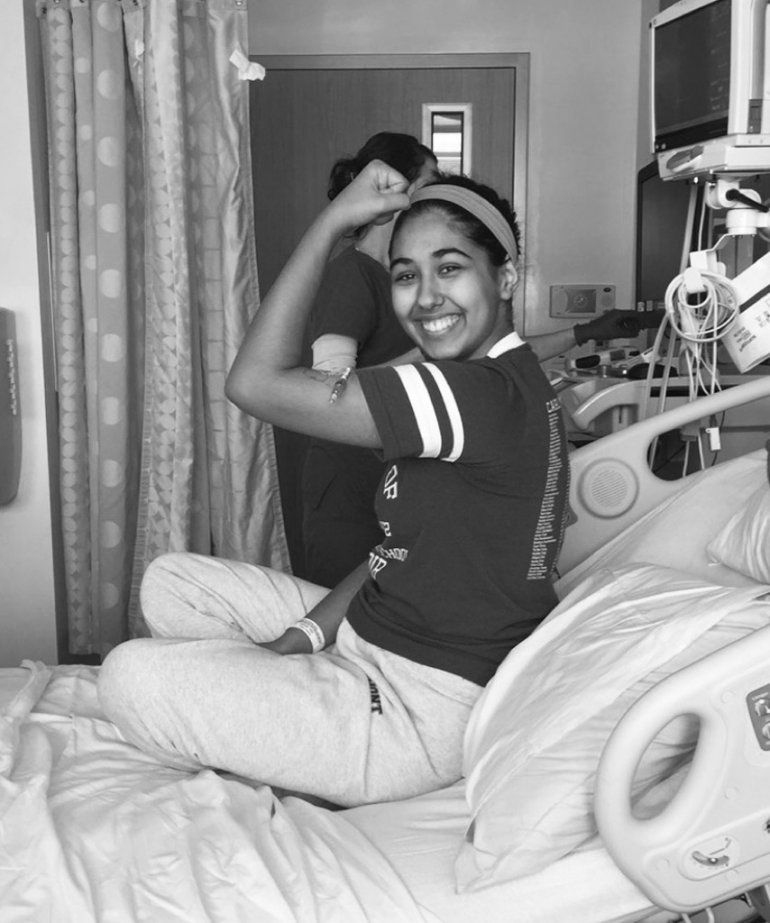
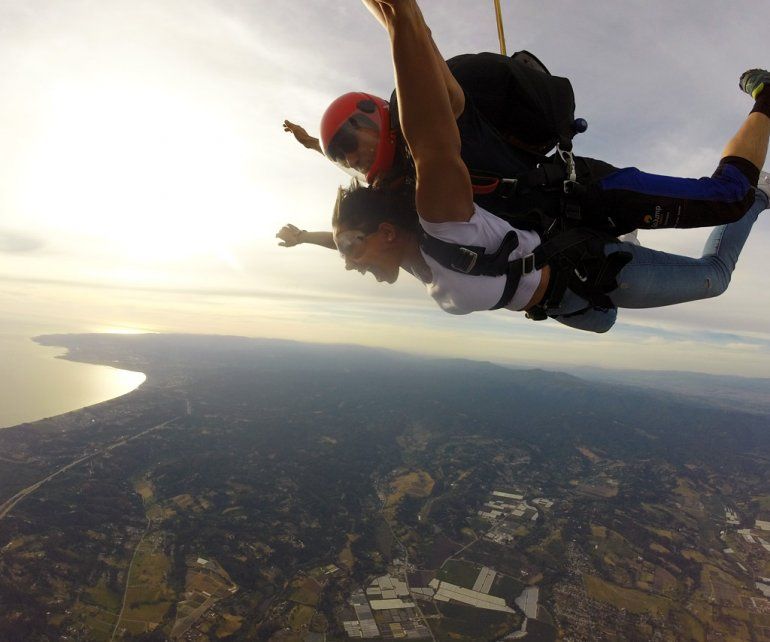
Photos: courtesy of Lily
In 2016, Lily finished her last round of chemo at age 15. Three years later, at the end of her freshman year of college, she went skydiving.
“Maybe you’ll find yourself crying about missing out on something, like your graduation, and that is completely okay. Hold space for that. But then you’ll wake up the next day and feel excited about something else in the future. Both feelings can exist at the same time,” she says. “The world will find ways not to replace the memories that were lost but to fill that void with new experiences.”
Lily, now 19 and a sophomore at UC Davis, is currently sheltering in place with her college roommates. Like everyone, Lily faces tough moments, but she’s doing her best to stay positive. She has written a list of what she wants to do and who she wants to be – and she’s using this time to put her goals into action.
“I’m working every day to make this a beautiful time in my life,” she says. “One thing everyone can do is to put energy into what they want to see. Do whatever you can in this moment to make things better for yourself, and everything else will unfold.”
Lily is decorating her room to create a personal oasis, devouring books, and training to run a half-marathon. She’s never been a runner, but that’s not going to stop her. She has a plan, a schedule, and a path she’s chosen for herself.
With that goal in mind, Lily heads out most mornings to do what runners do, what we’re all doing: the tedious but sometimes transformative task of putting one foot in front of another until you end up where you want to be.
